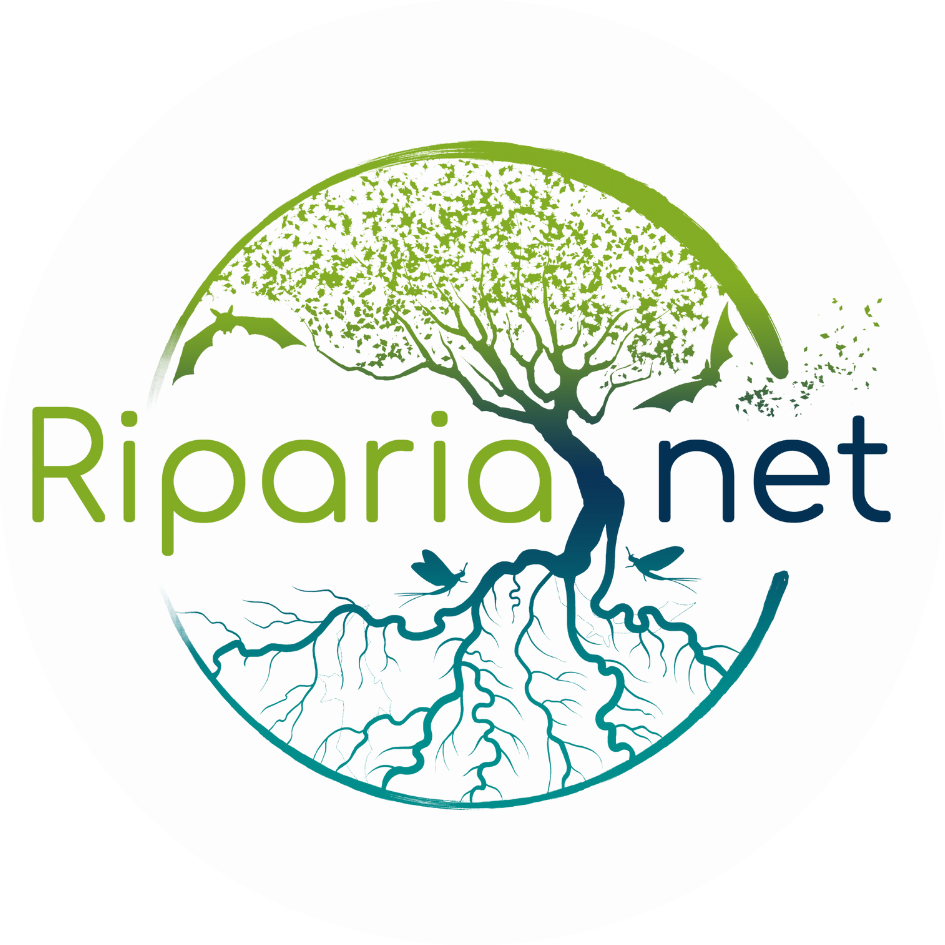RIPARIANET combines remote earth observations and field experiments to develop science-based guidance and reproducible approaches for biodiversity conservation of riparian networks enhancing ecological connectivity across the aquatic and terrestrial realms. The study areas (SA) cover 6 river basins reflecting different European biogeographic zones: Boreal, Continental, Alpine, Mediterranean and Atlantic. Between 10 and 20 study reaches will be surveyed in each basin.
The Swedish SA is the Sävar River basin, dominated by boreal forest, including several mires and lakes, originating in Lossmen Lake and ending in the Bothnian Sea. The lower part of the river is a Nature 2000 reserve, with unusual broadleaf swamp forests of high biological values.
The German SA is the Queich River basin. It originates from a forested area (UNESCO Biosphere Reserve Palatinate Forest) and flows into the river Rhine. The middle and downstream reaches run through vineyards, urban areas and intensively used agricultural land, yet some stretches are surrounded by very extensively used pasture.
The Italian SAs are the Noce Stream basin in the Alpine region and the River Tiber basin in the Mediterranean region. The Noce Stream originates in the Stelvio National Park and flows into the Adige River. The headwaters are mainly fed by glacial and snow melt, and upper course of the Noce Stream is a designated Natura 2000 Reserve Network, an „ecological corridor“ of protected areas, including three Special Areas of Conservation (SACs). However, two hydropower plants strongly alter the hydrological regime of the lower reaches.The Tiber River basin covers a vast heterogeneous landscape across four Italian regions with climate ranging from continental to Mediterranean. Numerous protected areas from the Natura 2000 network are present throughout the network, such as the Farfa River and its confluence with the Tiber (Tevere-Farfa Reserve). However, growing urbanisation (including the city of Rome) exerts substantial pressure on both aquatic and riparian integrity.
The Spanish SA comprises the Pas River basin in the Cantabrian Cordillera. Heathland communities and extensive pasture dominate the Pas territory. Natural vegetation in the higher parts has been predated centuries ago and was converted to pasture. In the low lands, urban sprawling and eucalyptus plantations are the main drivers of land use and land cover change. Despite this, the riparian vegetation of the Pas River still has a reasonable status of conservation in many parts of the catchment, and the Pas main axis is part of the Natura 2000.
Cantabrian Atlantic Subprovince biogeographic region. The higher part of the Cávado presents two areas with relevant conservation interest: the Peneda- Gerês National Park (Natura 2000) and the Barroso district at Montalegre (a Globally Important Agricultural Heritage Systems [UNESCO]).
A vast amount of biological and environmental data (e.g. water quality, micropollutants, streamflow series, invertebrates, fish, birds, macrophytes), as well as established links with local stakeholders are already available for each basin, derived from both statutory monitoring and specific research projects from the Consortium. These projects include Climalert, Streameco and River2Ocean [PT], S-Hydro and REPORT [IT], Alice and LIFE-DIVAQUA [ES], SystemLink [DE].

Priorising riparian zones to sustain and connect river biodiversity and function
© 2024 RPTU - Kaiserslautern-Landau